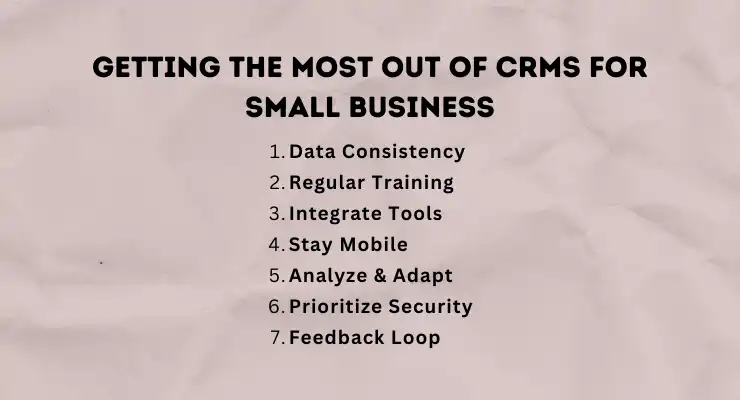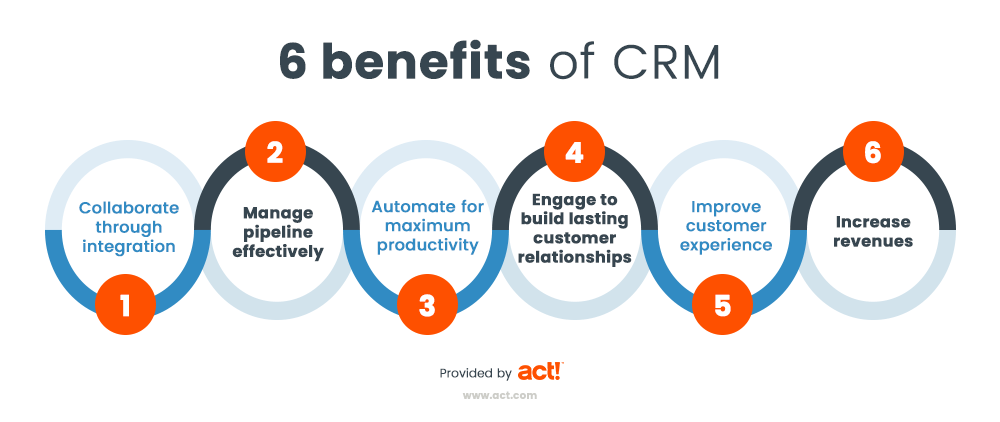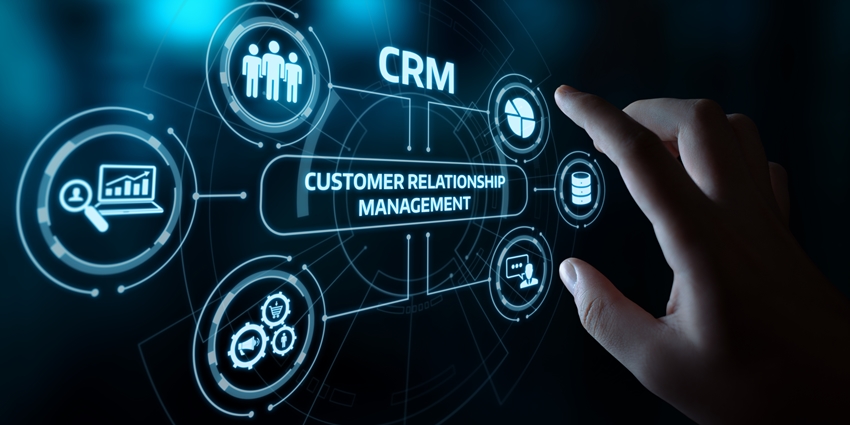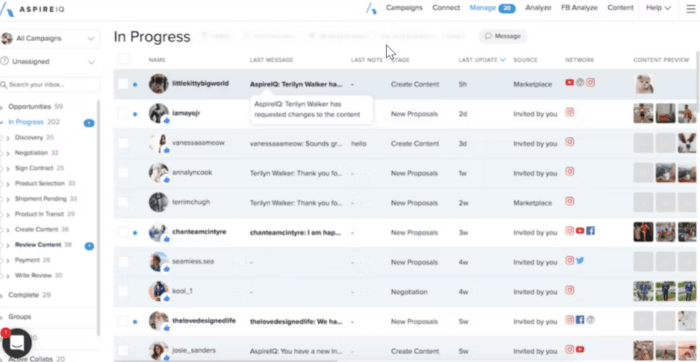Small Business CRM Security in 2025: Fortifying Your Data Against Tomorrow’s Threats

Introduction: Navigating the CRM Security Landscape in 2025
The world of small business is constantly evolving, and with it, the challenges and opportunities. In 2025, the digital frontier is more critical than ever, with customer relationship management (CRM) systems becoming the lifeblood of countless enterprises. These systems hold the keys to customer data, sales pipelines, marketing strategies, and ultimately, the success of your business. However, this reliance also makes them prime targets for cyber threats. This article delves deep into the critical aspects of small business CRM security in 2025, equipping you with the knowledge and strategies to safeguard your valuable data and build a resilient business.
The stakes are high. A data breach can cripple a small business, leading to financial losses, reputational damage, and a loss of customer trust. The cyber threat landscape is becoming increasingly sophisticated, with attackers employing advanced techniques like AI-powered phishing, ransomware, and supply chain attacks. Protecting your CRM system isn’t just about ticking boxes; it’s about building a proactive, layered defense that anticipates and mitigates risks.
We’ll explore the latest threats, best practices, and emerging technologies that will shape CRM security in the coming years. From understanding the evolving regulatory environment to implementing robust security measures, this guide will provide you with a roadmap to navigate the complexities of CRM security and ensure your business thrives.
The Evolving Threat Landscape: What Small Businesses Face in 2025
The threats facing small businesses in 2025 are far more diverse and sophisticated than ever before. The rise of remote work, cloud-based solutions, and interconnected systems has expanded the attack surface, creating new vulnerabilities that cybercriminals are eager to exploit. Let’s break down some of the key threats:
1. AI-Powered Phishing and Social Engineering
Artificial intelligence is no longer a futuristic concept; it’s a reality that’s being weaponized by cybercriminals. AI-powered phishing attacks are becoming increasingly difficult to detect. These attacks can craft highly personalized and convincing emails that trick employees into divulging sensitive information or clicking malicious links. The use of deepfakes to impersonate executives or colleagues is also becoming more prevalent, making social engineering attacks even more effective.
2. Ransomware Attacks on the Rise
Ransomware remains a significant threat, with attackers targeting CRM systems to encrypt data and demand hefty ransoms. Small businesses are particularly vulnerable because they often lack the resources to invest in robust security measures and incident response plans. The trend of “double extortion,” where attackers steal data before encrypting it and threaten to release it publicly if the ransom isn’t paid, adds another layer of complexity and pressure.
3. Supply Chain Vulnerabilities
Small businesses often rely on third-party vendors and software providers for their CRM solutions. This creates a supply chain vulnerability, where a breach in a vendor’s system can compromise the security of your CRM data. Attackers are increasingly targeting these third parties to gain access to multiple clients’ systems simultaneously. The SolarWinds hack is a prime example of the devastating impact of supply chain attacks.
4. Data Breaches and Data Theft
Data breaches can occur through various means, including weak passwords, unpatched vulnerabilities, and insider threats. Attackers are constantly seeking to steal sensitive customer data, such as personally identifiable information (PII), financial details, and proprietary business information. Stolen data can be used for identity theft, fraud, and other malicious purposes.
5. Insider Threats
Not all threats come from outside. Insider threats, whether malicious or unintentional, pose a significant risk to CRM security. Employees with access to sensitive data can inadvertently or intentionally cause a data breach. This could be due to negligence, lack of security awareness, or malicious intent. Proper employee training and access control are crucial to mitigating insider threats.
Essential Security Measures for Your CRM in 2025
Protecting your CRM system requires a multi-layered approach that incorporates various security measures. Here are some essential steps to take:
1. Strong Password Policies and Multi-Factor Authentication (MFA)
Weak passwords are a primary entry point for attackers. Implement strong password policies that require complex passwords, regular password changes, and the use of a password manager. Multi-factor authentication (MFA) adds an extra layer of security by requiring users to verify their identity through a second factor, such as a code sent to their mobile device. MFA significantly reduces the risk of unauthorized access, even if a password is compromised.
2. Access Control and Role-Based Permissions
Granting employees access only to the data and functionalities they need is crucial. Implement role-based access control (RBAC) to define different roles within your organization and assign permissions accordingly. This limits the potential damage from insider threats and reduces the risk of unauthorized data access. Regularly review and update access permissions as employees’ roles change.
3. Data Encryption at Rest and in Transit
Encryption protects your data from unauthorized access, both when it’s stored in your CRM system (encryption at rest) and when it’s being transmitted over the network (encryption in transit). Ensure that your CRM provider offers robust encryption capabilities and that you have them enabled. This is a critical safeguard against data breaches and data theft.
4. Regular Backups and Disaster Recovery Planning
Data loss can be catastrophic. Implement a regular backup schedule to ensure that your CRM data is backed up securely. Store backups in a separate, secure location, preferably offsite. Develop a comprehensive disaster recovery plan that outlines the steps to take in the event of a data breach or system failure. This plan should include procedures for restoring data, notifying affected parties, and mitigating the damage.
5. Security Audits and Penetration Testing
Regular security audits and penetration testing help identify vulnerabilities in your CRM system. Conduct periodic audits to assess your security posture and identify areas for improvement. Hire ethical hackers to conduct penetration tests, simulating real-world attacks to uncover weaknesses. Address any vulnerabilities found promptly.
6. Employee Training and Security Awareness
Your employees are your first line of defense. Provide regular security awareness training to educate them about the latest threats, best practices, and how to identify and report suspicious activity. Training should cover topics such as phishing, social engineering, password security, and data privacy. Foster a culture of security awareness throughout your organization.
7. Choose a Secure CRM Provider
The security of your CRM system depends heavily on the security practices of your provider. Research and select a reputable CRM provider that prioritizes security. Look for providers that offer robust security features, such as encryption, MFA, and regular security audits. Review their security policies and compliance certifications, such as ISO 27001.
8. Implement a Web Application Firewall (WAF)
A WAF acts as a shield for your CRM system, protecting it from web-based attacks, such as SQL injection and cross-site scripting (XSS). A WAF analyzes incoming traffic and blocks malicious requests before they can reach your CRM application. This adds an extra layer of protection against common web vulnerabilities.
9. Monitor and Log Activity
Implement robust monitoring and logging capabilities to track user activity and detect suspicious behavior. Monitor your CRM system for unauthorized access attempts, unusual data access patterns, and other potential security threats. Regularly review logs to identify and investigate any security incidents. Consider using a Security Information and Event Management (SIEM) system to automate log analysis and threat detection.
Emerging Technologies Shaping CRM Security in 2025
The rapid advancement of technology is transforming the way we approach CRM security. Here are some emerging technologies that are poised to play a significant role in 2025:
1. Artificial Intelligence (AI) and Machine Learning (ML)
AI and ML are being used to enhance CRM security in several ways. They can be used to detect and prevent phishing attacks, identify suspicious activity, and automate security tasks. AI-powered threat detection systems can analyze vast amounts of data to identify anomalies and potential threats in real-time, enabling faster response times. Machine learning algorithms can also be trained to recognize and block malicious traffic.
2. Blockchain Technology
Blockchain technology can be used to enhance the security and integrity of CRM data. By storing data on a decentralized, immutable ledger, blockchain can prevent data tampering and provide a secure audit trail. Blockchain can also be used to implement secure identity management and access control mechanisms.
3. Zero Trust Architecture
Zero Trust is a security model that assumes no user or device is inherently trustworthy, regardless of their location or network. This approach requires strict verification of every user and device before granting access to resources. In a Zero Trust architecture, access is granted on a least-privilege basis, minimizing the potential damage from a compromised account or device. Zero Trust is becoming increasingly important as organizations adopt remote work models and move to the cloud.
4. Security Automation and Orchestration
Security automation and orchestration tools can streamline security tasks, such as incident response, vulnerability management, and threat hunting. These tools automate repetitive tasks, freeing up security professionals to focus on more strategic initiatives. Security orchestration platforms can integrate with various security tools, enabling automated responses to security incidents.
5. Biometric Authentication
Biometric authentication, such as fingerprint scanning and facial recognition, is becoming more prevalent as a means of securing access to CRM systems. Biometrics provides a strong and convenient way to verify user identity, reducing the risk of unauthorized access. However, it’s important to ensure that biometric data is stored securely and protected from theft or misuse.
Compliance and Regulatory Considerations for CRM Security
Staying compliant with relevant regulations is essential for small businesses. Here are some key considerations:
1. General Data Protection Regulation (GDPR)
If you operate in the European Union or process the data of EU citizens, you must comply with GDPR. This regulation sets strict requirements for the collection, processing, and storage of personal data. GDPR requires businesses to implement appropriate security measures to protect personal data and to notify data breaches to the relevant authorities and affected individuals. Failure to comply with GDPR can result in significant fines.
2. California Consumer Privacy Act (CCPA) and California Privacy Rights Act (CPRA)
If you do business in California or collect the data of California residents, you must comply with CCPA and CPRA. These regulations give consumers the right to access, delete, and opt-out of the sale of their personal information. Businesses must implement security measures to protect consumer data and to respond to consumer requests. CPRA expands on CCPA by creating the California Privacy Protection Agency and strengthening consumer rights.
3. Payment Card Industry Data Security Standard (PCI DSS)
If you process credit card payments, you must comply with PCI DSS. This standard sets requirements for the security of cardholder data, including encryption, access control, and vulnerability management. Compliance with PCI DSS is essential for protecting your customers’ financial information and avoiding fines.
4. Other Industry-Specific Regulations
Depending on your industry, you may be subject to other regulations that impact CRM security. For example, healthcare providers must comply with the Health Insurance Portability and Accountability Act (HIPAA), which sets requirements for the privacy and security of protected health information (PHI). Financial institutions must comply with regulations such as the Gramm-Leach-Bliley Act (GLBA), which protects consumer financial information. Research and understand the relevant regulations for your industry and ensure that your CRM security practices comply.
Building a Culture of Security: Empowering Your Team
Security isn’t just about technology; it’s also about creating a culture of security within your organization. Here’s how you can empower your team to be security-conscious:
1. Security Awareness Training
Provide regular security awareness training to all employees, covering topics such as phishing, social engineering, password security, and data privacy. Use interactive training modules, quizzes, and real-world examples to make the training engaging and effective. Update the training regularly to address the latest threats and best practices.
2. Security Policies and Procedures
Develop clear and concise security policies and procedures that outline your security expectations and requirements. Communicate these policies to all employees and ensure that they understand their roles and responsibilities. Regularly review and update your policies to reflect changes in the threat landscape and your business practices.
3. Reporting and Incident Response
Establish a clear process for reporting security incidents and suspicious activity. Encourage employees to report any potential security concerns without fear of reprisal. Develop a comprehensive incident response plan that outlines the steps to take in the event of a security breach. Practice your incident response plan regularly to ensure that your team is prepared.
4. Open Communication and Feedback
Foster a culture of open communication and feedback. Encourage employees to ask questions, share concerns, and provide suggestions for improving your security practices. Regularly solicit feedback from your team and use it to improve your security program.
5. Incentivize Security Best Practices
Consider rewarding employees who demonstrate good security practices, such as reporting phishing attempts or identifying security vulnerabilities. This can help to reinforce the importance of security and encourage employees to take ownership of their role in protecting your data.
Conclusion: Securing Your Future with Proactive CRM Security
In 2025, CRM security is no longer an option; it’s a necessity for small businesses. The evolving threat landscape demands a proactive, multi-layered approach that incorporates robust security measures, emerging technologies, and a strong culture of security. By implementing the strategies and recommendations outlined in this article, you can safeguard your valuable CRM data, protect your business from cyber threats, and build a resilient foundation for future success.
Remember that CRM security is an ongoing process, not a one-time fix. Stay informed about the latest threats, adapt your security practices as needed, and continuously invest in your team’s security awareness. By prioritizing CRM security, you can protect your business, your customers, and your future in the ever-changing digital world.



